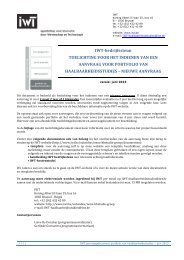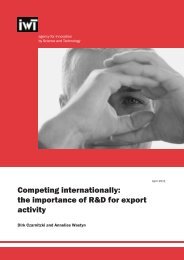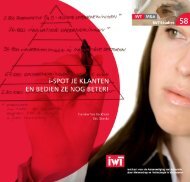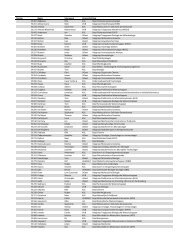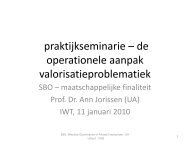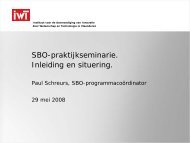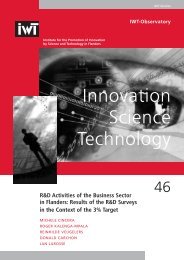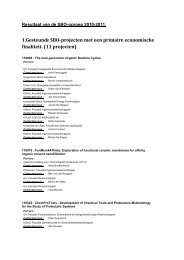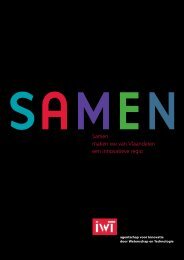40 Innovation Policy and Sustainable Development - IWT
40 Innovation Policy and Sustainable Development - IWT
40 Innovation Policy and Sustainable Development - IWT
Create successful ePaper yourself
Turn your PDF publications into a flip-book with our unique Google optimized e-Paper software.
Part 1<br />
SETTING THE SCENE<br />
><br />
INTRODUCTION<br />
The Position Paper by Patries Boekholt <strong>and</strong><br />
Jan Larosse starts from the observation that<br />
the rationale for innovation policy has been<br />
strengthened from a system perspective. It<br />
can meet the agenda of sustainable development<br />
in terms of innovation for societal<br />
objectives. From an economic perspective<br />
the missions of innovation policy – reducing<br />
market failures due to positive externalities<br />
of knowledge production <strong>and</strong> usage – <strong>and</strong><br />
of environmental policy – reducing the negative<br />
externalities of non-sustainable technologies<br />
– can be combined. On the<br />
agenda is how to operate an horizontal<br />
policy that effectively realizes this goal: is<br />
innovation policy effective as a policy<br />
instrument, <strong>and</strong> can it be part of a policy<br />
mix that levies progress to sustainable<br />
development<br />
A first series of conference papers was delivered<br />
by the keynote speakers, invited to ‘set<br />
the scene’, <strong>and</strong> introduce the two policy traditions<br />
that are challenged to contribute<br />
together to environmentally sustainable<br />
growth.<br />
Ken Guy starts with drawing some lessons<br />
on the effectiveness of present day innovation<br />
policy from a system perspective.<br />
<strong>Innovation</strong> policy is now expected to serve<br />
several masters. Exploring the possibilities of<br />
interaction between innovation <strong>and</strong> environmental<br />
policies, he suggests that a beneficial<br />
combination has to answer two different<br />
questions: what can innovation policy<br />
do for sustainable development, <strong>and</strong> what<br />
can environmental policy do for innovation.<br />
Applying a successful broad mix requires<br />
high levels of ‘strategic intelligence’.<br />
The second paper was presented by George<br />
Heaton, who introduced the metaphor of<br />
'an arranged marriage' to describe the difficulties<br />
<strong>and</strong> opportunities involved in matching<br />
two parties that have a lot in common,<br />
both are not able to get acquainted without<br />
special commitment <strong>and</strong> special changeagents.<br />
There is a clear under-investment in<br />
next generation technologies by the environmental<br />
industry, but there is a need to<br />
frame these technology developments in<br />
new, transformative technological pathways.<br />
The paper of the third keynote speaker Luke<br />
Georghiou features in Part 2, introducing the<br />
concept of additionality to assess whether<br />
innovation policy makes a difference.<br />
The paper of René Kemp is included in this<br />
introductory series because it stresses the<br />
need for an integrated policy approach<br />
towards innovation for the environment. It<br />
outlines the model of transition management<br />
to work towards sustainability in various<br />
domains. Transition management consists<br />
of a deliberate attempt to bring forth<br />
long-term change in a step-wise manner,<br />
utilising dynamics.<br />
1<br />
9



